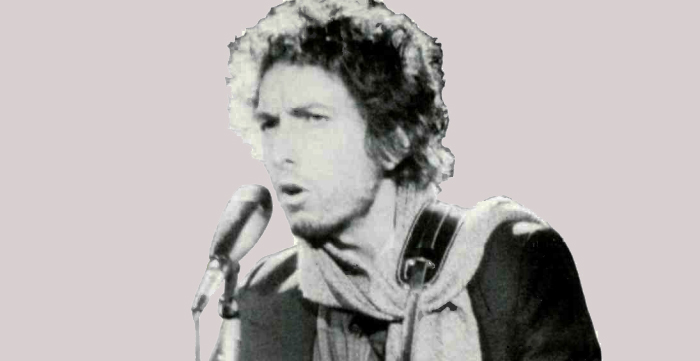
R-e/p: You mean he just walked out and it was a one-take?
RF: He just went out and played it. It was astounding. I hadn’t heard him do anything that sounded like his early records. Lou Kemp, his old friend from Minnesota, was there. He also came on the tour with us.
Anyway, Bob went out to record, and I put up some microphones, and I was going to get a sound. But usually he wouldn’t sing unless we were recording. That’s the way he was. You couldn’t get him to go out and just sing, unless he was running something down with The Band.
Well, I said I was going to get a sound. He asked, “Is the tape rolling? Why don’t you just roll it.” So I did, and he started singing, and there was no way in the world I could have stopped him to say, “Go back to the top.” It was such an intense performance.
If you listen to the record, you can hear noises from the buttons on his jacket. But he didn’t seem to care. Lou and I were both knocked out by the song. We listened to it a few times and didn’t think about it again until we got down to mixing. I mentioned re-cutting it to eliminate the button sounds, at one point, and Bob said, “Well, maybe.” But he never said yes, so we let it go.
R-e/p: Was that the last song they cut?
RF: Actually, the final recording happened during the mixing. We had mixed about two or three songs, and Bob, Robbie, Nat and I were there. Bob went out and played the piano while we were mixing. All of a sudden, he came in and said, “I’d like to try ‘Dirge’ on the piano.” We had recorded a version with only acoustic guitar and vocal a few days earlier.
R-e/p: Were you ready for it?
RF: We weren’t ready at all, we were mixing. But we put up a tape and he said to Robbie, “Maybe you could play guitar on this.” They did it once, Bob playing piano and singing, and Robbie playing acoustic guitar. The second time was the take. It was another one of those incredible, one-time performances.
R-e/p: Was anyone else involved in the mixing?
RF: Robbie Robertson has a good ear for mixing, knows what he wants to hear. So it was pretty much him and Bob when it got down to mixing. Robbie and I mixed the record together, and Bob was there commenting and making suggestions.
R-e/p: Can you describe Bob’s concern with the mixing, or at least the kinds of things he picked up on?
RF: Well, for one thing, he wanted certain types of sounds. He wanted a kind of bar room sound from the piano on “Dirge” rather than a majestic sound. He also wanted a raunchy vocal sound. We actually mixed “Dirge” immediately after we recorded it that night. Robbie and I listened to it once and I said, “Let’s mix it right now.”
So we took a mix and that’s what’s on the record. It had a unique character. The sound of that particular mix made a lot of difference and was important to him.
We did another mix later going for a more “polished” sound, but didn’t use it. That’s the kind of stuff he was sensitive to, how the mixes affected the character of the music. That might have been more important to him than the sound quality
R-e/p: Did it take a long time to mix the album ?
RF: We came in and mixed a few songs. We would work a day or two and take a few days off. And we always worked from noon to about eight, really good hours. One of the songs, “Hazel,” we used the way we first mixed it. But we remixed the other two because we felt we could do better.
Once we got into doing them, we mixed the whole album in about three or four days. But then we spent more time than it took to record or mix just to sequence the record. Bob wanted to live with a few different sequences, until he found one that was just right.
